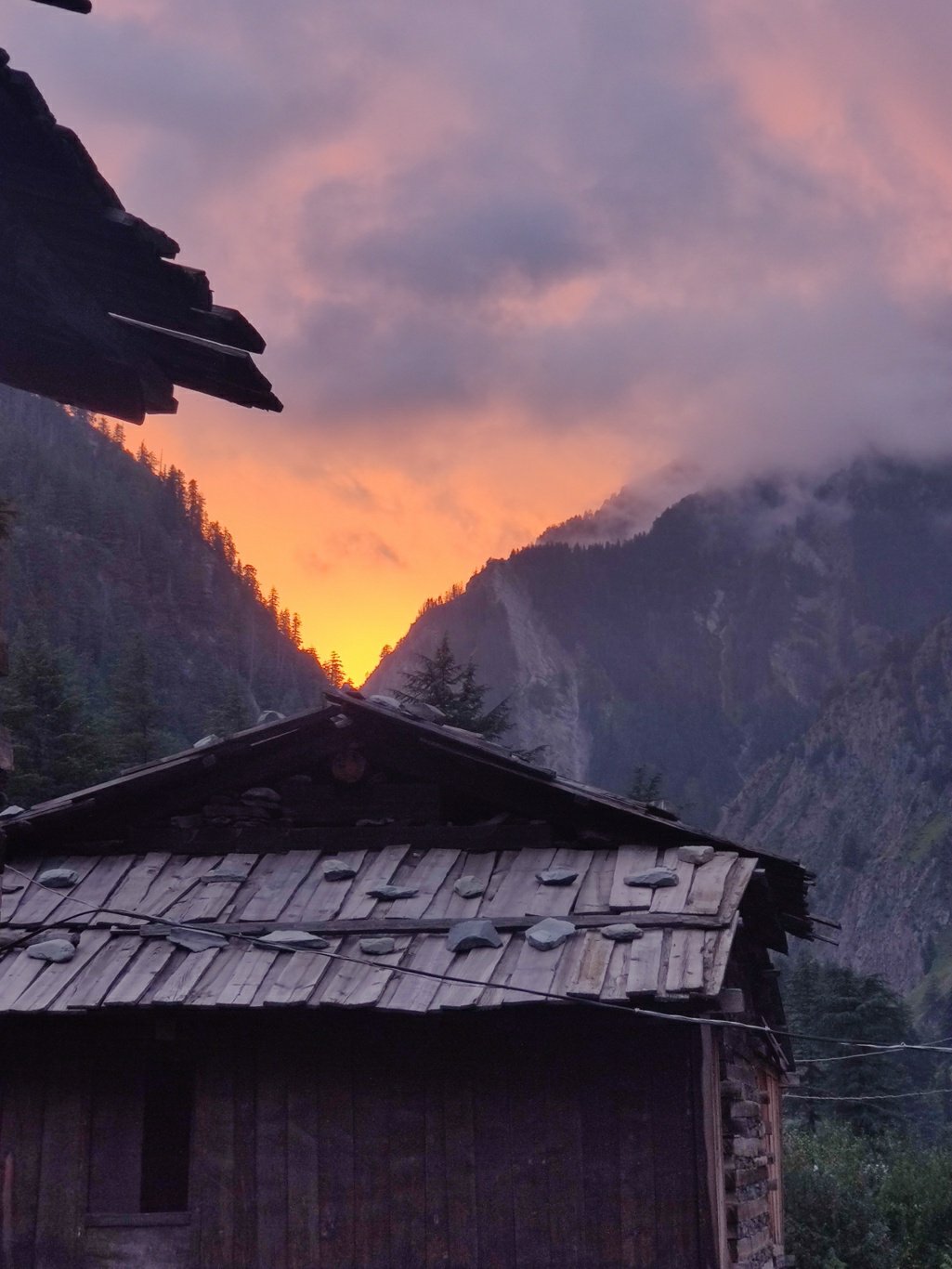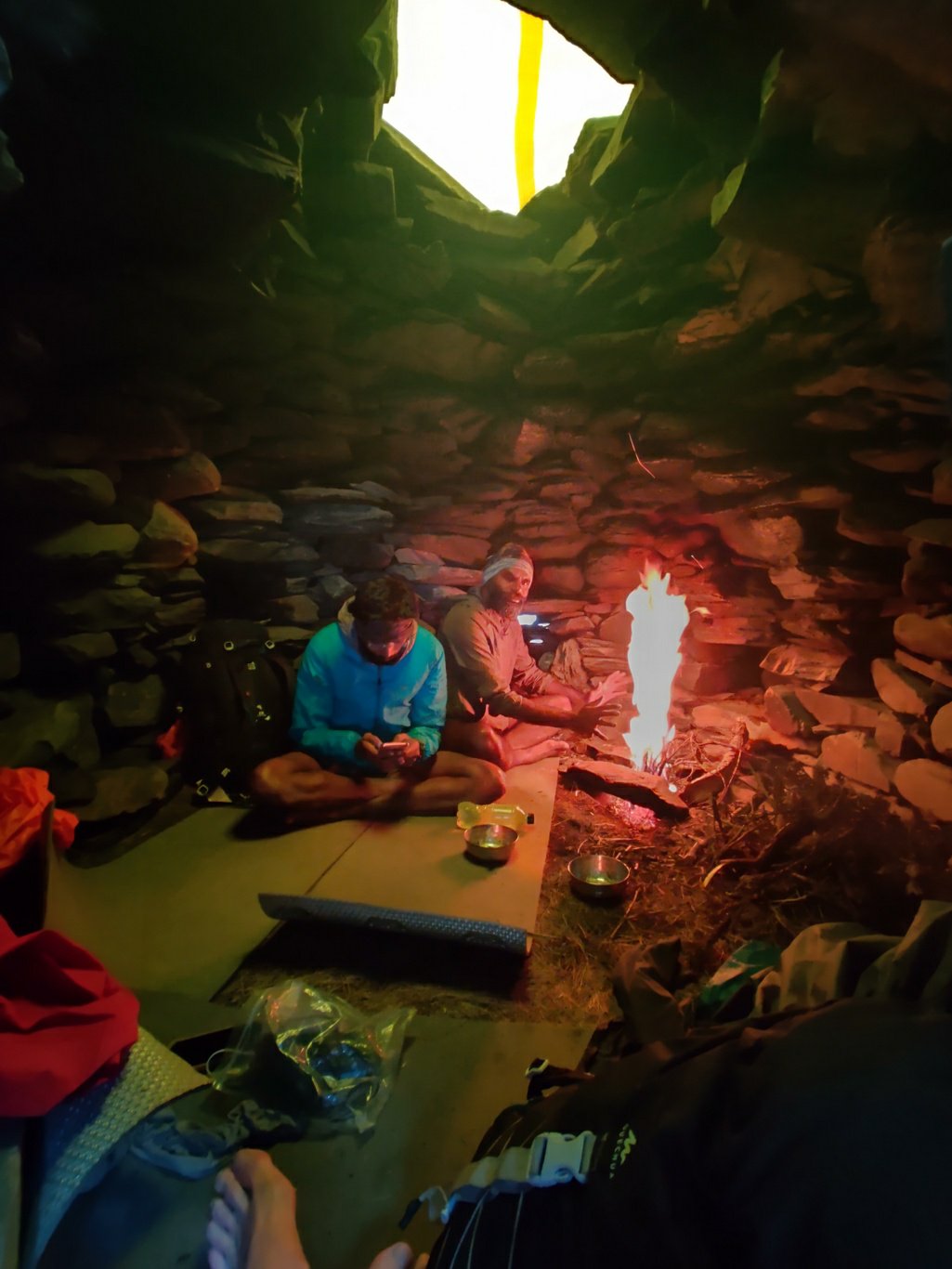
The next day we woke up to a cold morning at 4200m in a windy valley next to a glacial stream. Good we found the rock shelter which had cut out the wind. We could hear the raging currents of the nearby stream throughout the night. We quickly cooked up some breakfast with dry wood to energize us for the day ahead. Target for today was to reach Bara Bhangal, the most remote hamlet in Himachal Pradesh, 2 days away from any road head and surround by high ranges on all sides.
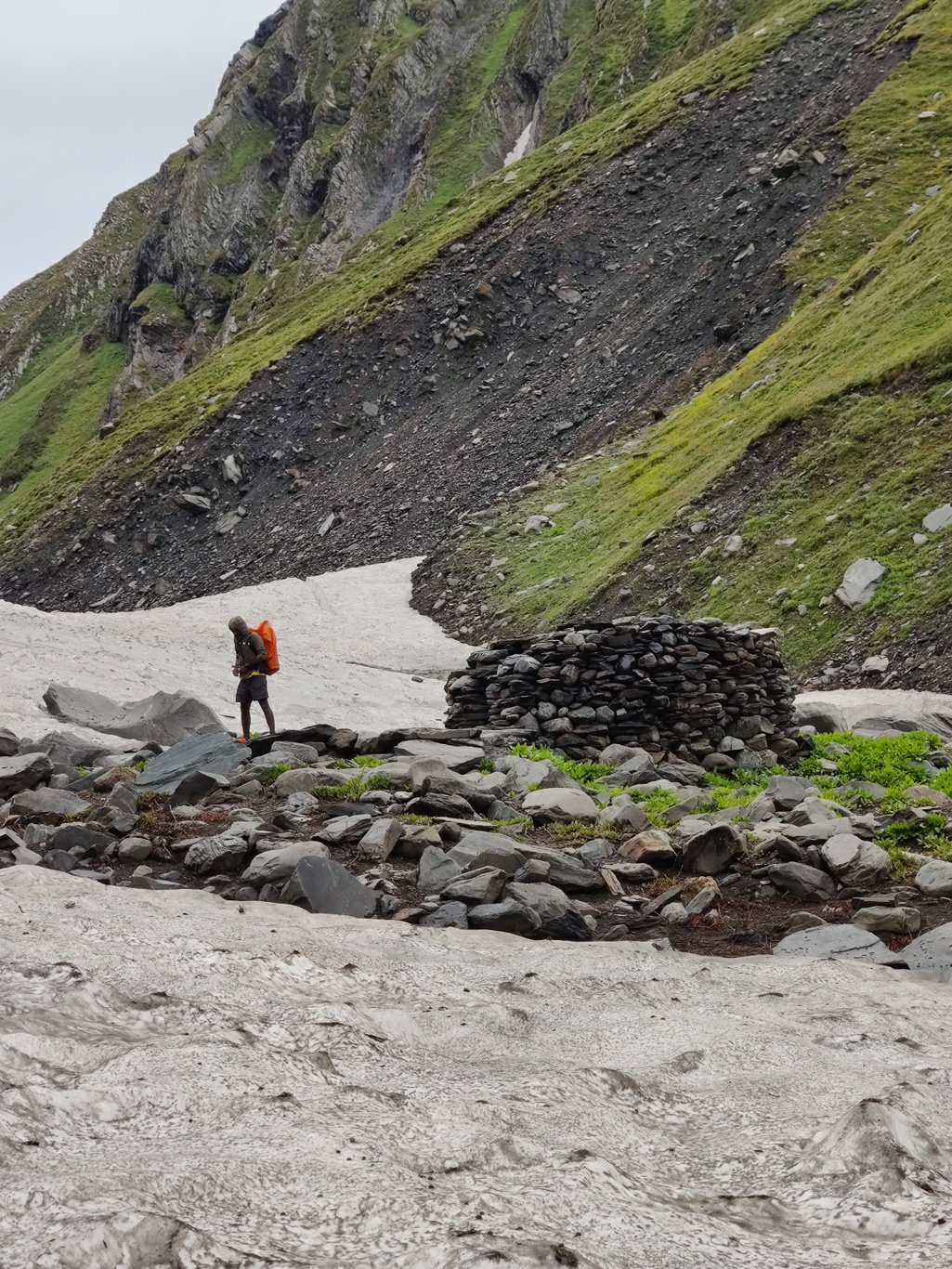
We proceeded downstream along the Kaliheni Nalla mostly walking on top of the frozen snow bridges from the previous winter. Walking on an inclined snow bridge is relatively easy as the surface is rough and full of small potholes which allow you to arrest yourself. Here and there the bridges were broken and we had to scramble along the landslide prone valley slopes. In several places the top soil had been wiped off exposing lose scree underneath, making it precarious to walk across.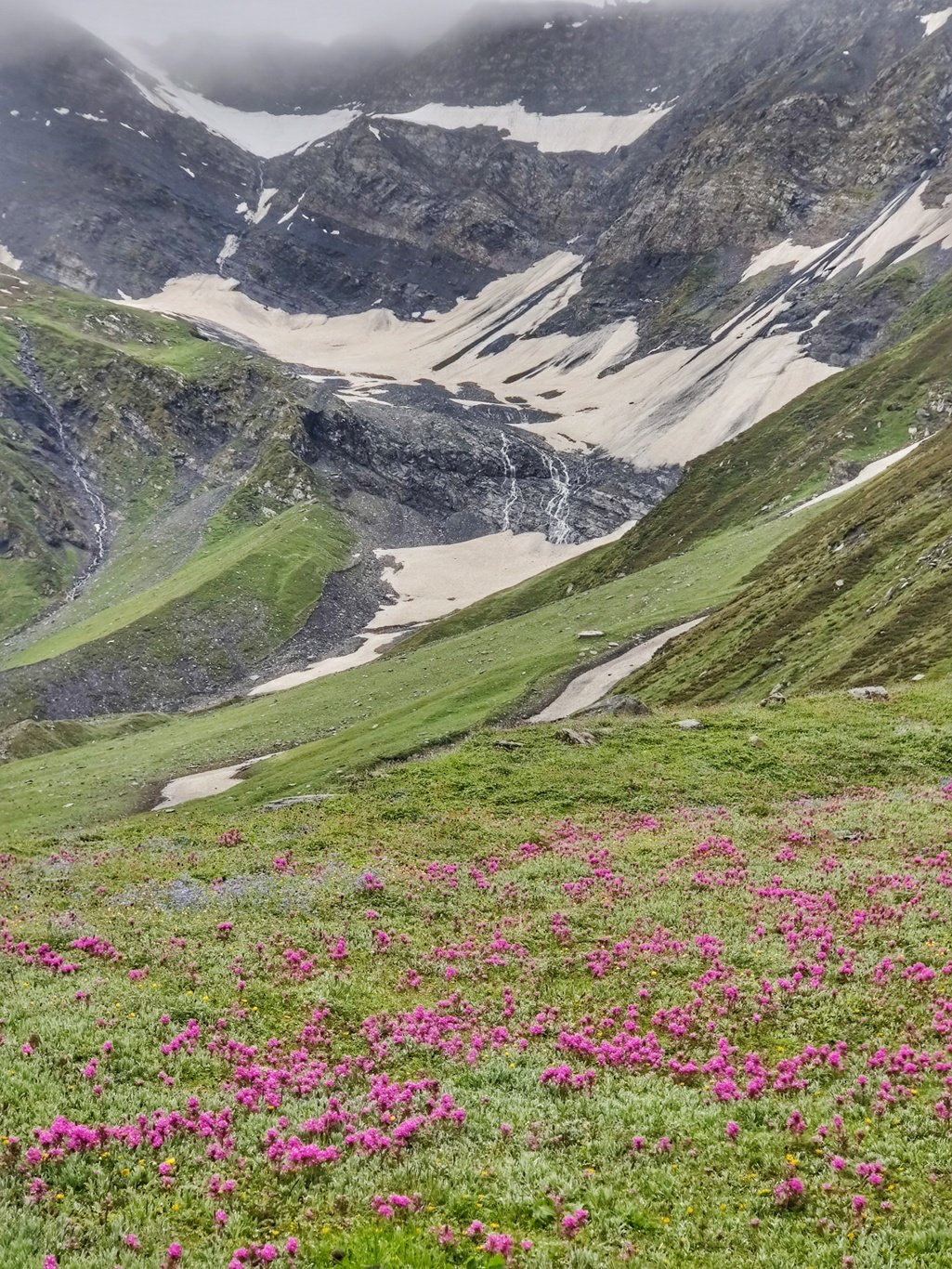
As we proceeded further the valley opens up into beautiful, pink colored alpine meadows below the barren and snow covered rocky ridges above. I was wondering when we would meet shepherds as these were their grazing grounds. Looks like they had retreated to lower altitudes due to bad weather.
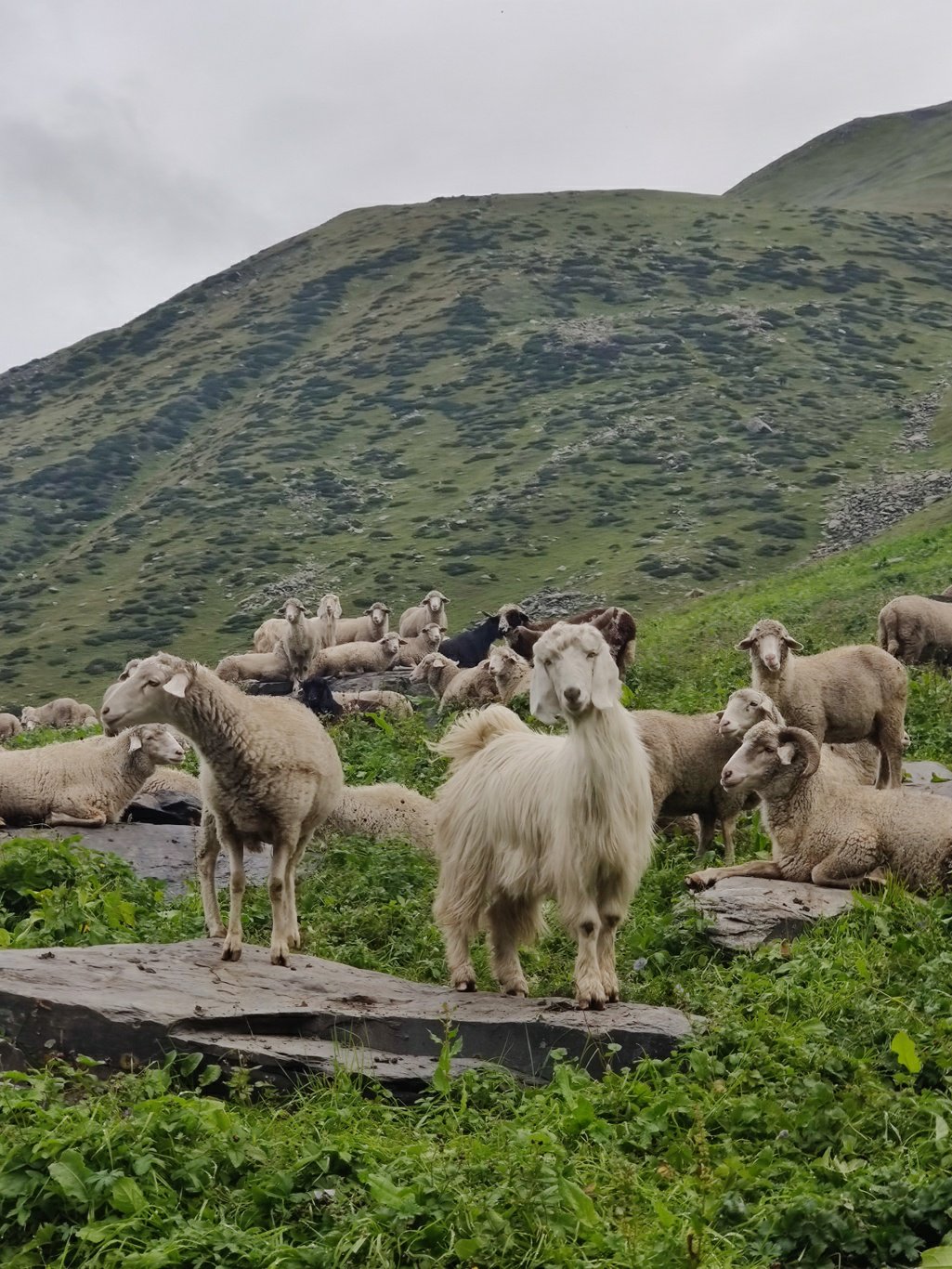
After a turning in the valley we finally saw the first herd near another rock shelter. The shepherds kindly invited us over for some hot tea, one of them going out to take fresh milk from one of the goats. The shepherds were preparing for a big festive, cleaning big vessels and cooking large quantities of food. Apparently today all shepherds in the region where converging to this location – nearby a small temple above – for a festival. They invited us to stay over for the sumptuous lunch they were preparing.
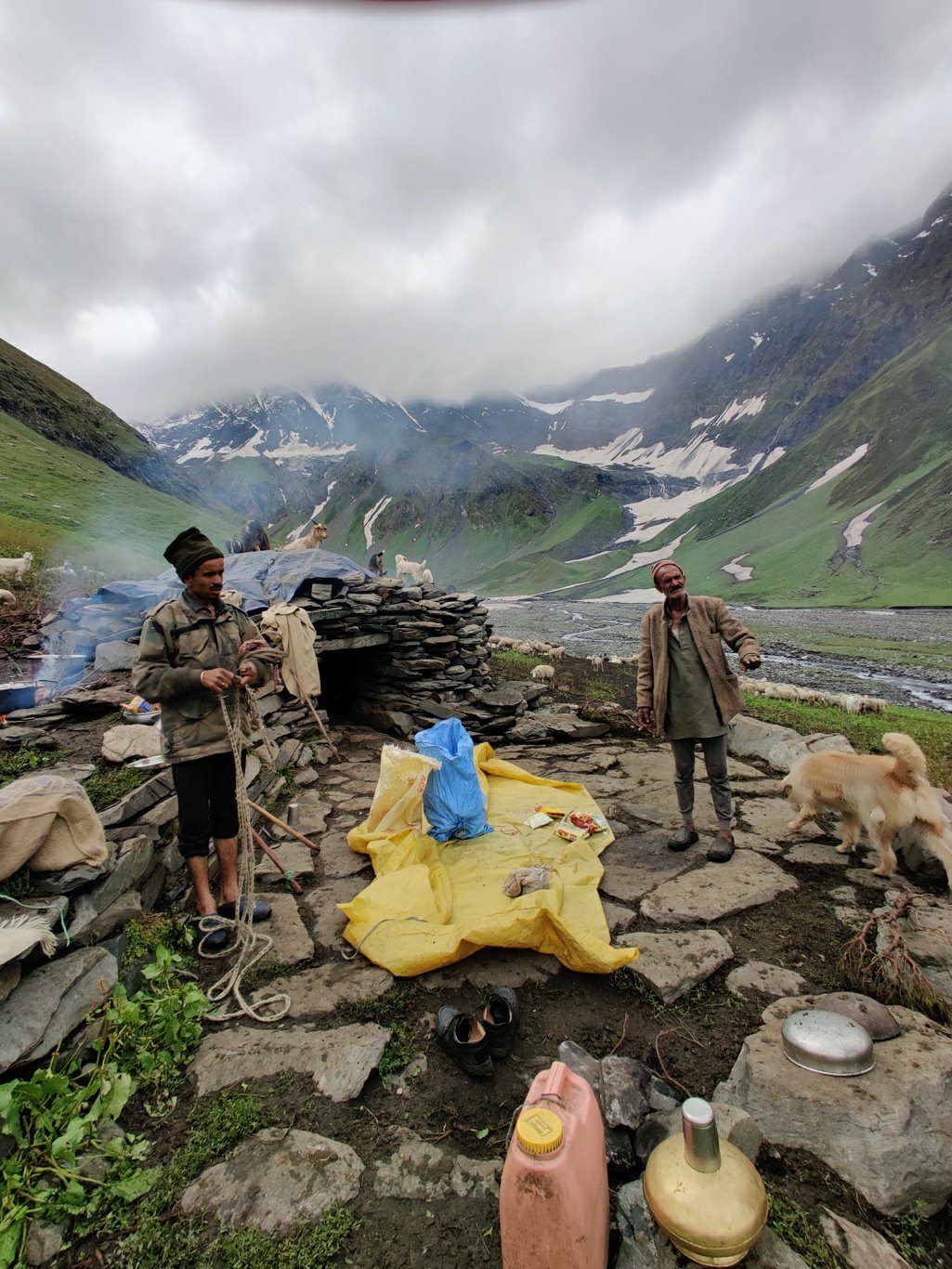
As it was still early morning we did not want to waste valuable time – being on a strict timeline – and decided to move ahead. At this point a dangerous side-stream joins the Kaliheni Nalla from the right side which I remember crossing with some difficulty the previous year. Given the strong water currents this season we decided to instead cross the main river and proceed on the other side of the valley.
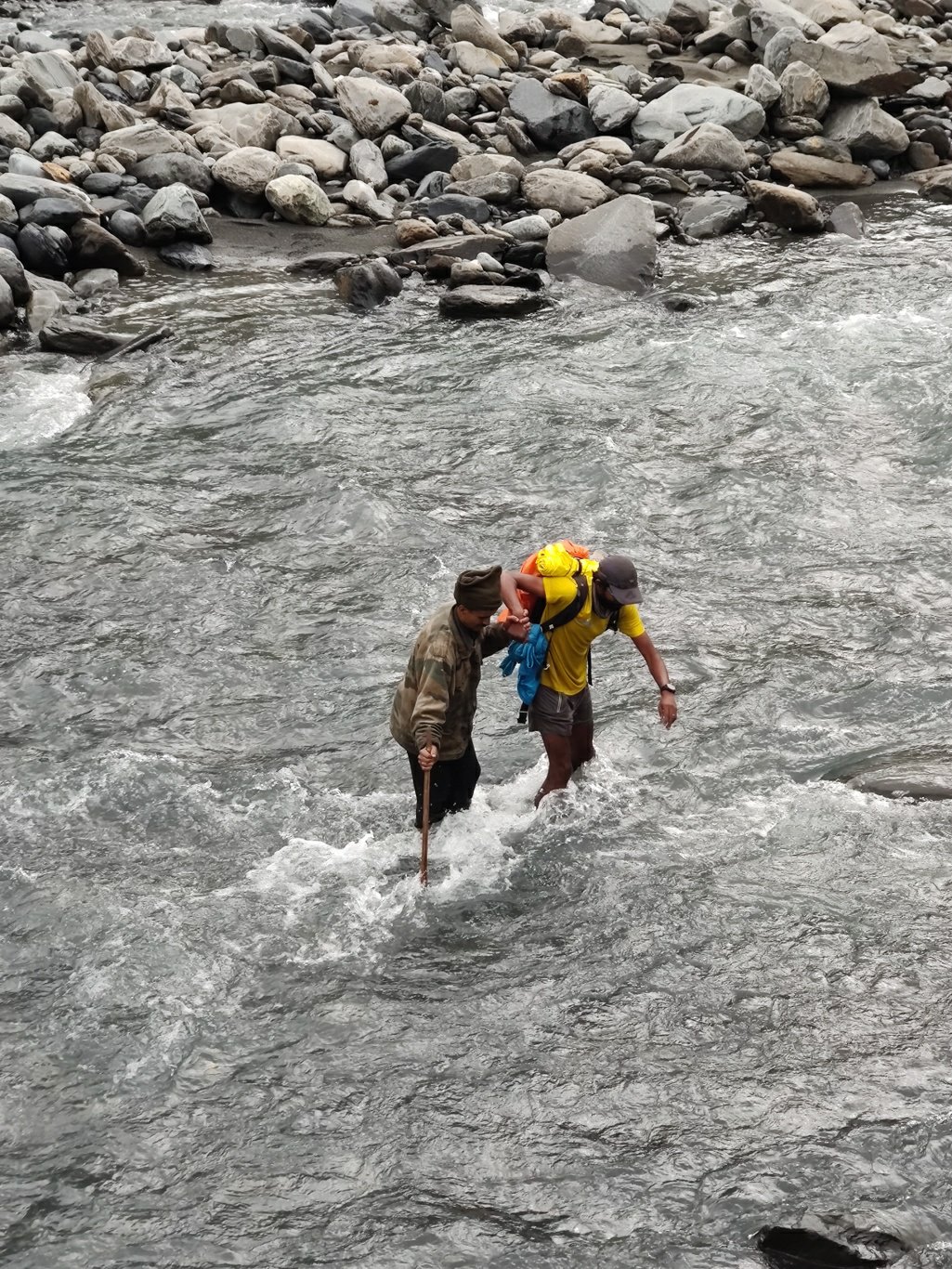
Even at this high point the Kaliheni Nalla had picked up significant force and we had to find a wide river section where the force of the water was spread out to cross over. Further downstream we saw a large snow bridge where we could get back to the same side. The shepherds were kind enough to guide us through the main river.
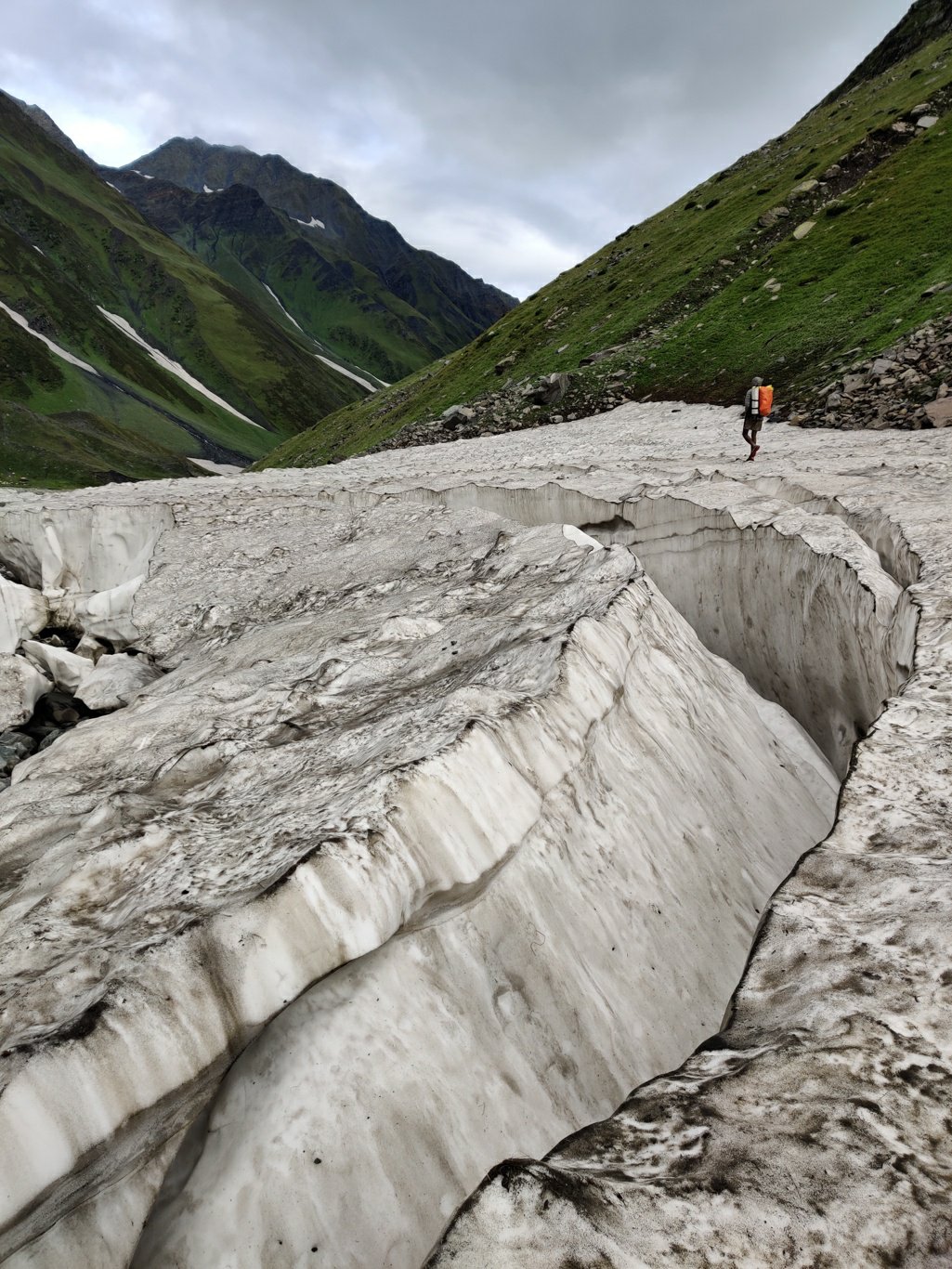
After a short hike on the meadows of the left valley slope we hopped onto the snow bridges again making excellent progress in proceeding down the river. We had to be careful as in many places the frozen compacted snow bridges had collapsed under their own weight and deep crevasses had formed of at least 10 meters deep. Also while walking on top of a snow bridge you never really could assess how thick it was underneath.
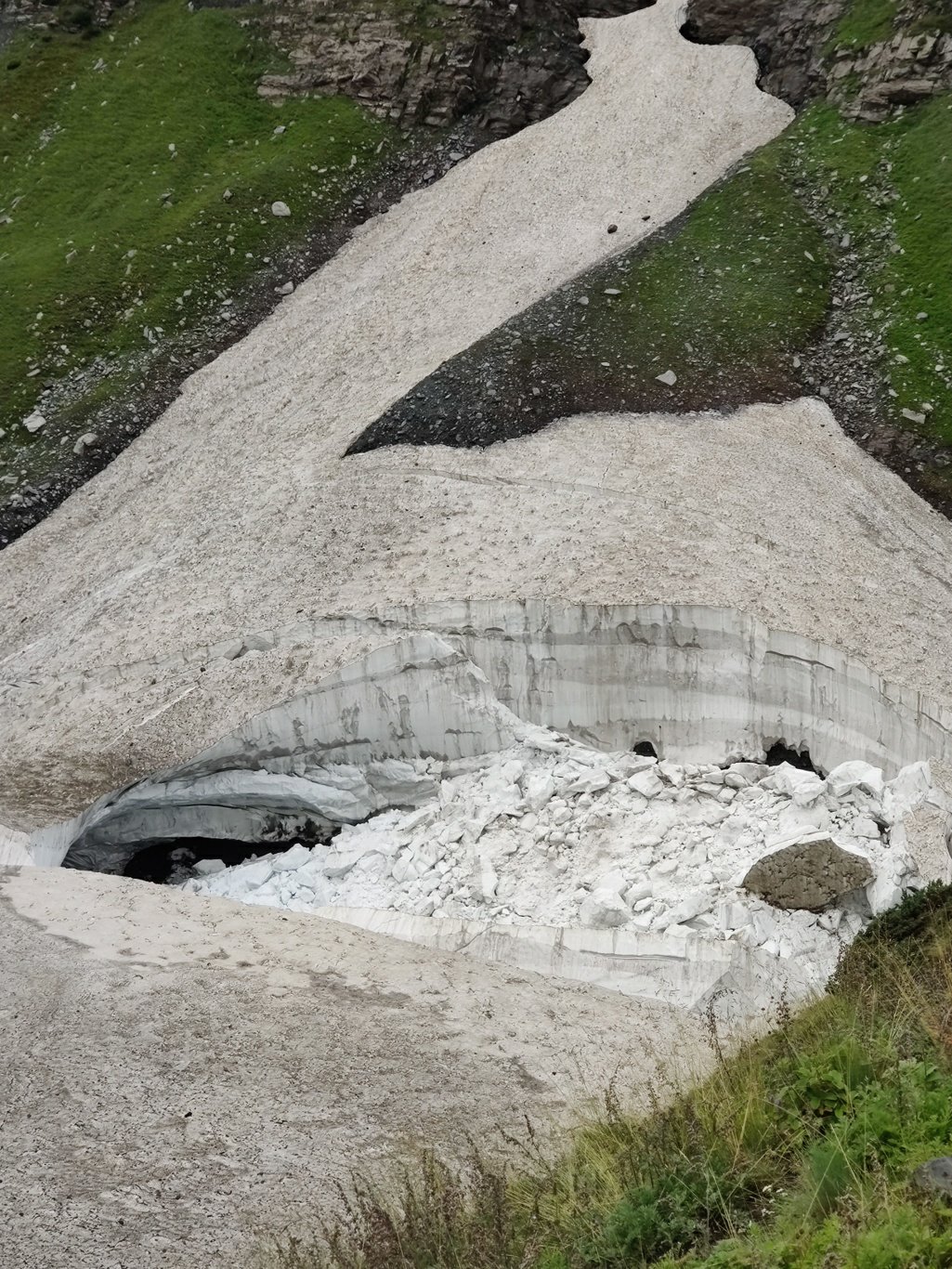
The middle section of the snow bridge melts first from underneath possibly due to the warm wind blowing across the stream. At one point the OSM (Open Street Maps) trail climbs out of the valley on the right side but given the ease of walking on top of the snow bridges we just proceeded straight down the valley. This was much faster than scrambling along the steep valley slopes which were landslided in many places.
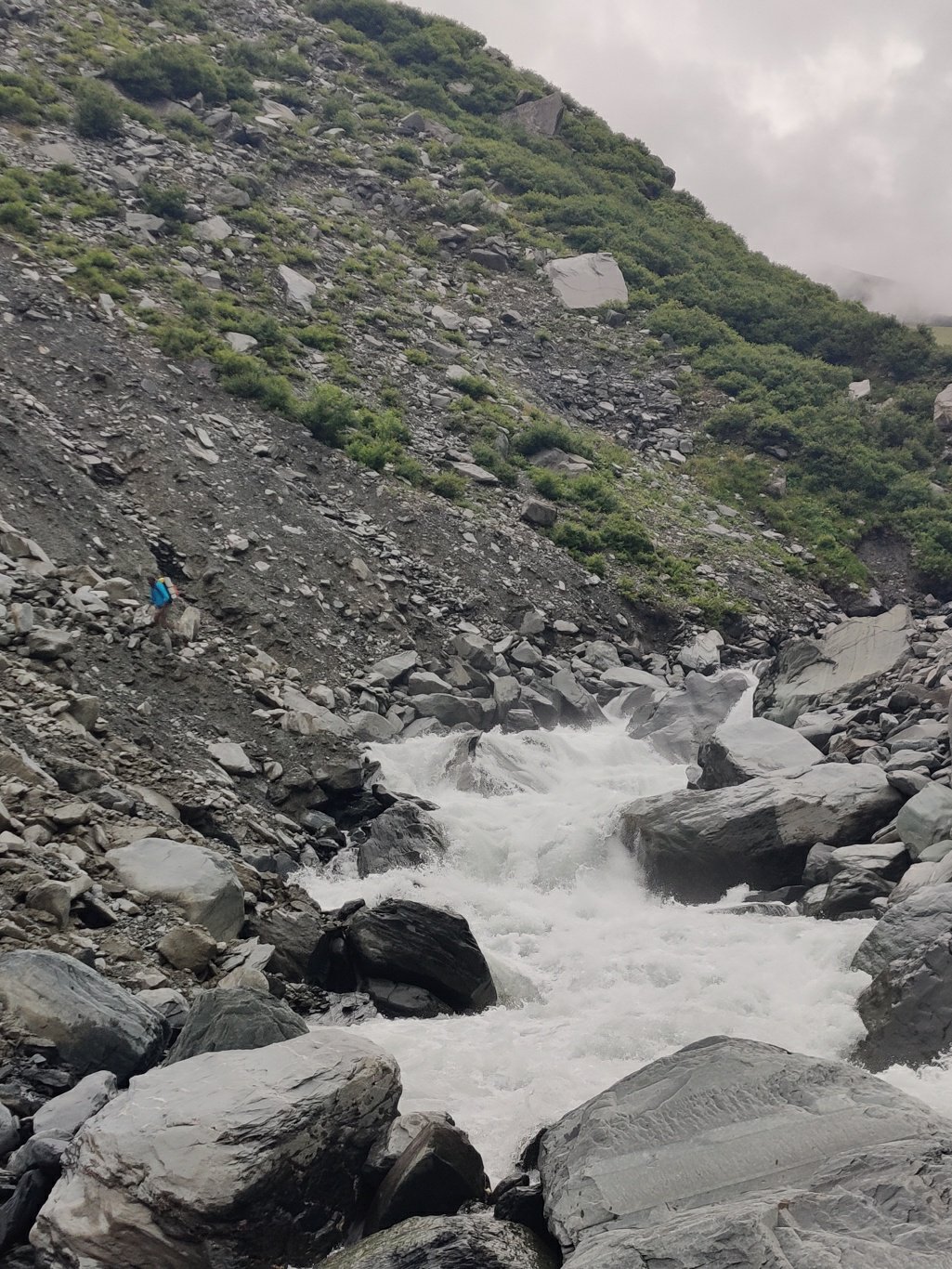
As we descended to lower (=warmer) altitudes the snow bridges had melted completely and we soon got stuck trying to scramble across boulders on the sides of the ever wilder Kaliheni Nalla. Progress became very slow and we decided to instead climb up and catch the trail high above on the right side. After a steep intensive climb we got on the trail which was now running above the frequent landslides in the lower part of the valley.
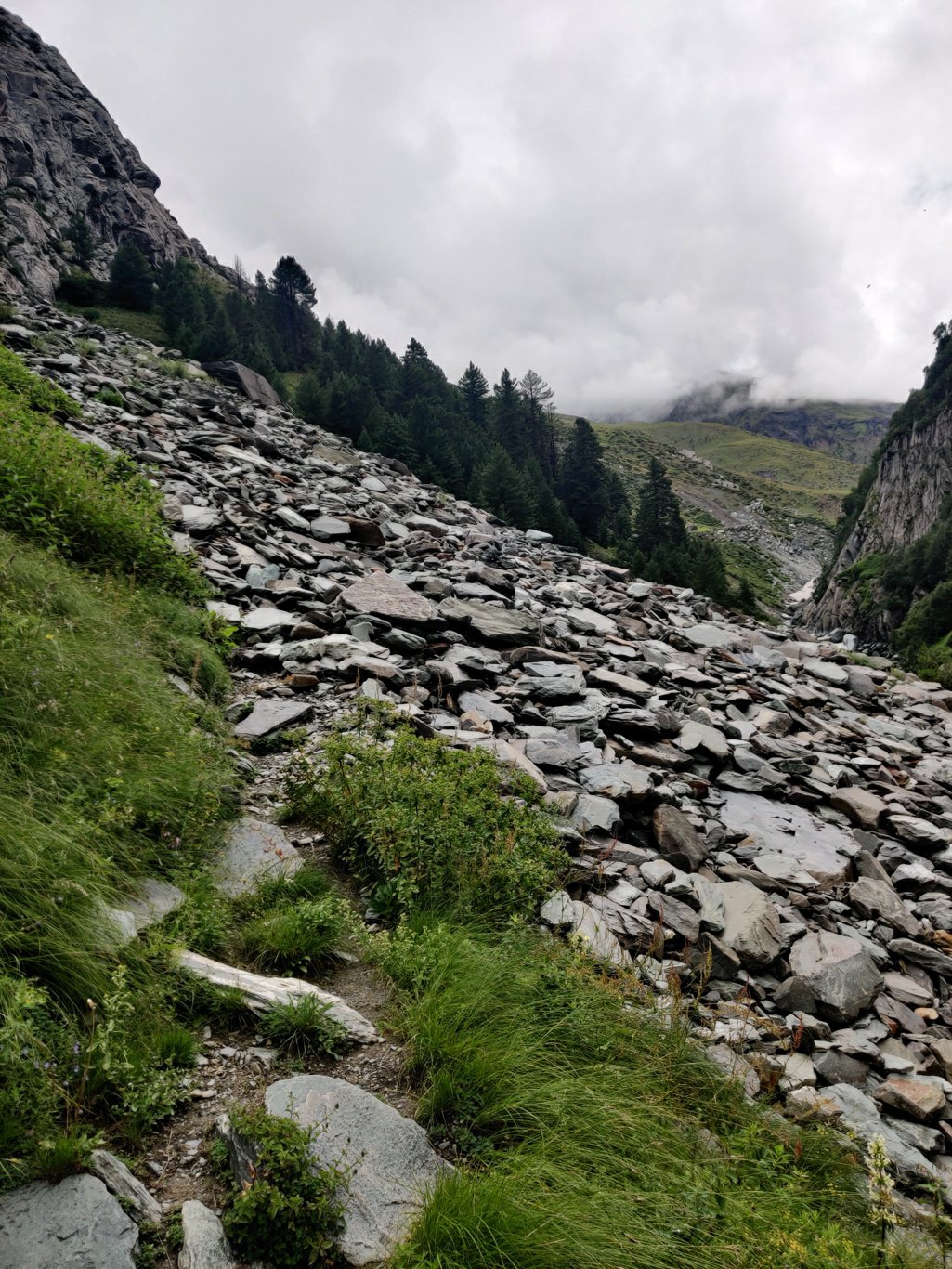
Even tough we were proceeding downstream, the trail was now climbing up high above the valley to circumvent a couple of steeply cut side-gullies in the valley which would have been impossible to traverse at lower heights. Once above these side-streams the trail contoured pretty flat along the valley slope.
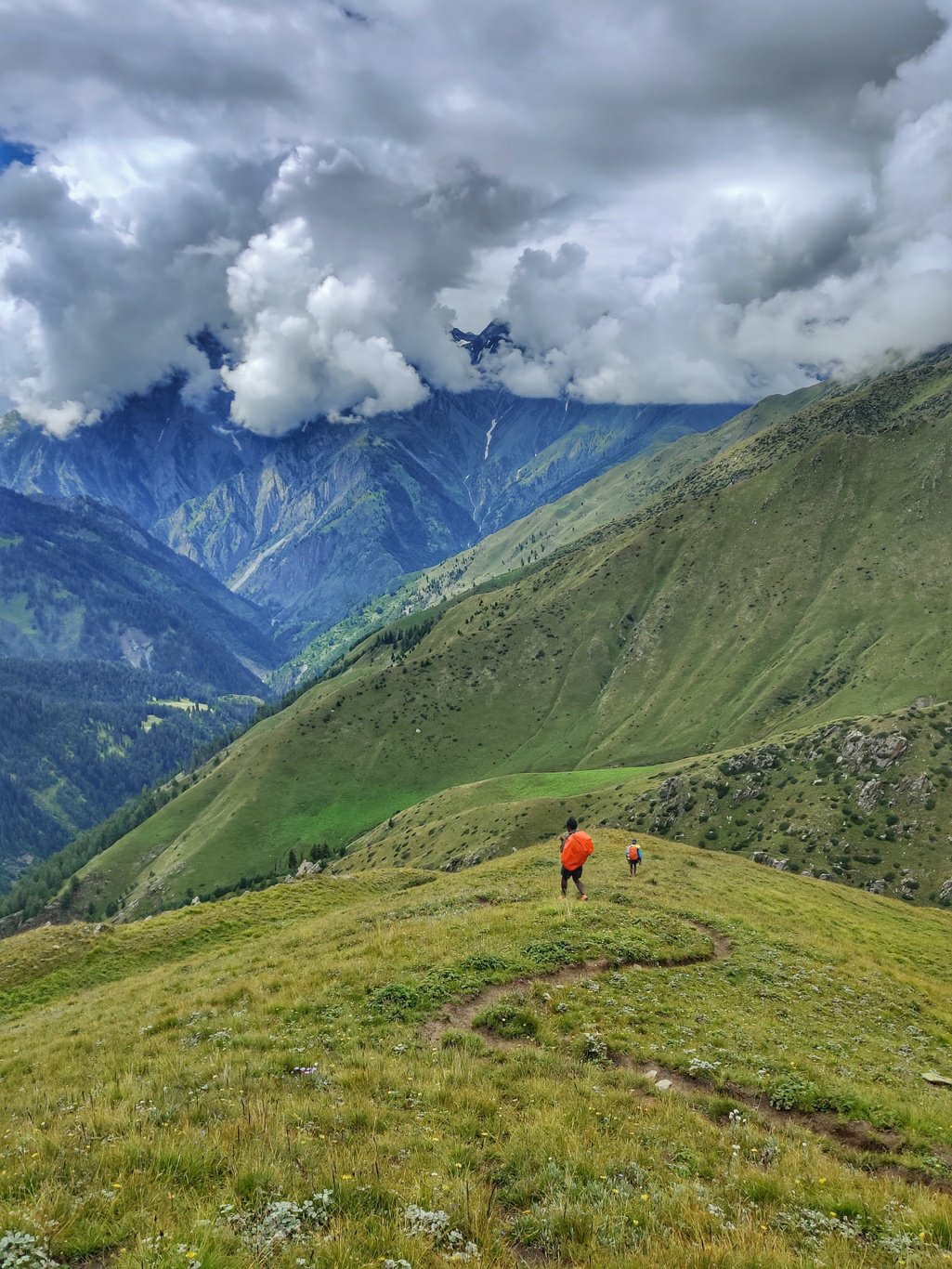
We were now walking through beautiful lush green meadows with enchanting views on the Kaliheni Nalla valley far below. Far ahead we could see the confluence of the Kaliheni river with the Ravi River valley where our destination Bara Bhangal was located. The trail was contouring gently across several small ridges and side-streams on the valley slope. High above the horizon we could see the cloud indulged high ranges of the Pir Panjal.
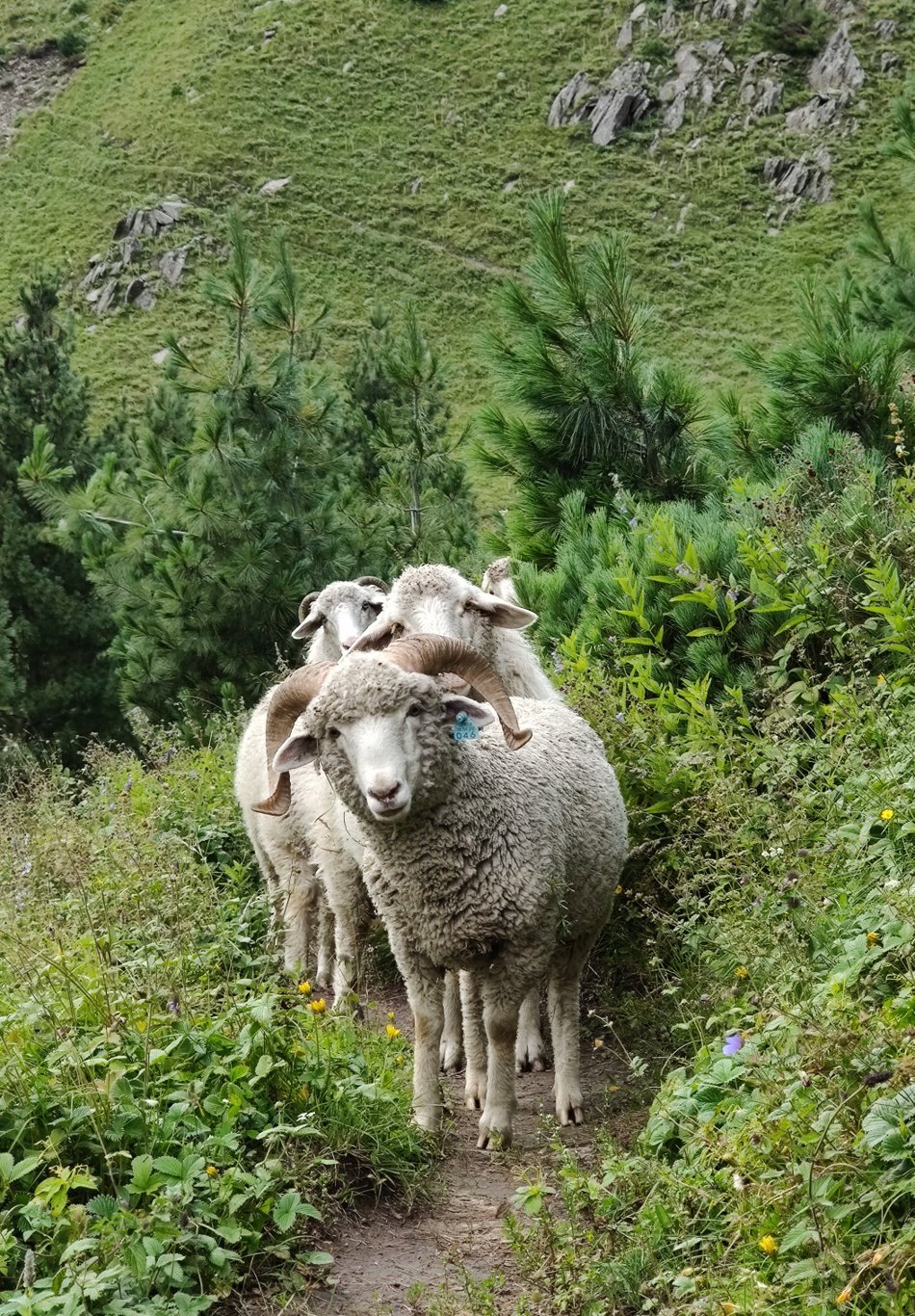
Very soon we were passing by several shepherds grazing the lush green meadows which stretched out high above and below the trail. Shepherds were staying in rock shelters or simply staying in the open below a tarpaulin sheet. Their herds of 500+ sheep and goat were spread over large areas around their camp. Finally the trail started descending down the valley towards the confluence with the Ravi river.
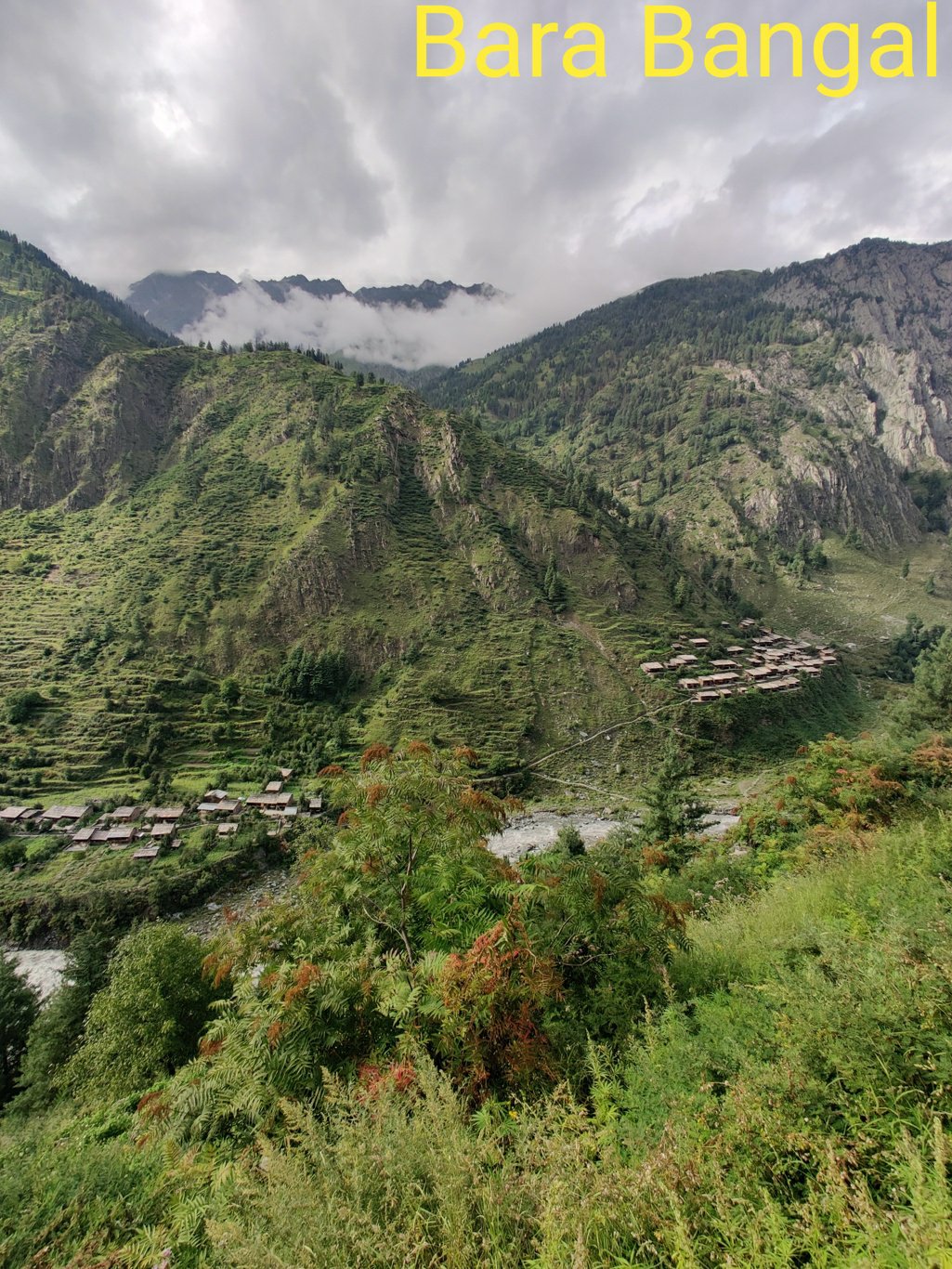
We soon reached the farm lands on the outskirts of Bara Bhangal which was located on the other side of the Ravi river valley. The settlement was split up in two distinct parts – upper and lower Bara Bhangal, both fairy-tale style hamlets made up of wooden houses nested above the river side. The only way to reach this village was through either Kaliheni or Thamsar high passes across the Dhauladar or following a dangerously steep rock path downstream the Ravi River valley for 2 days. This settlement was probably cut of from the rest of the world during winter when the passes were closed.
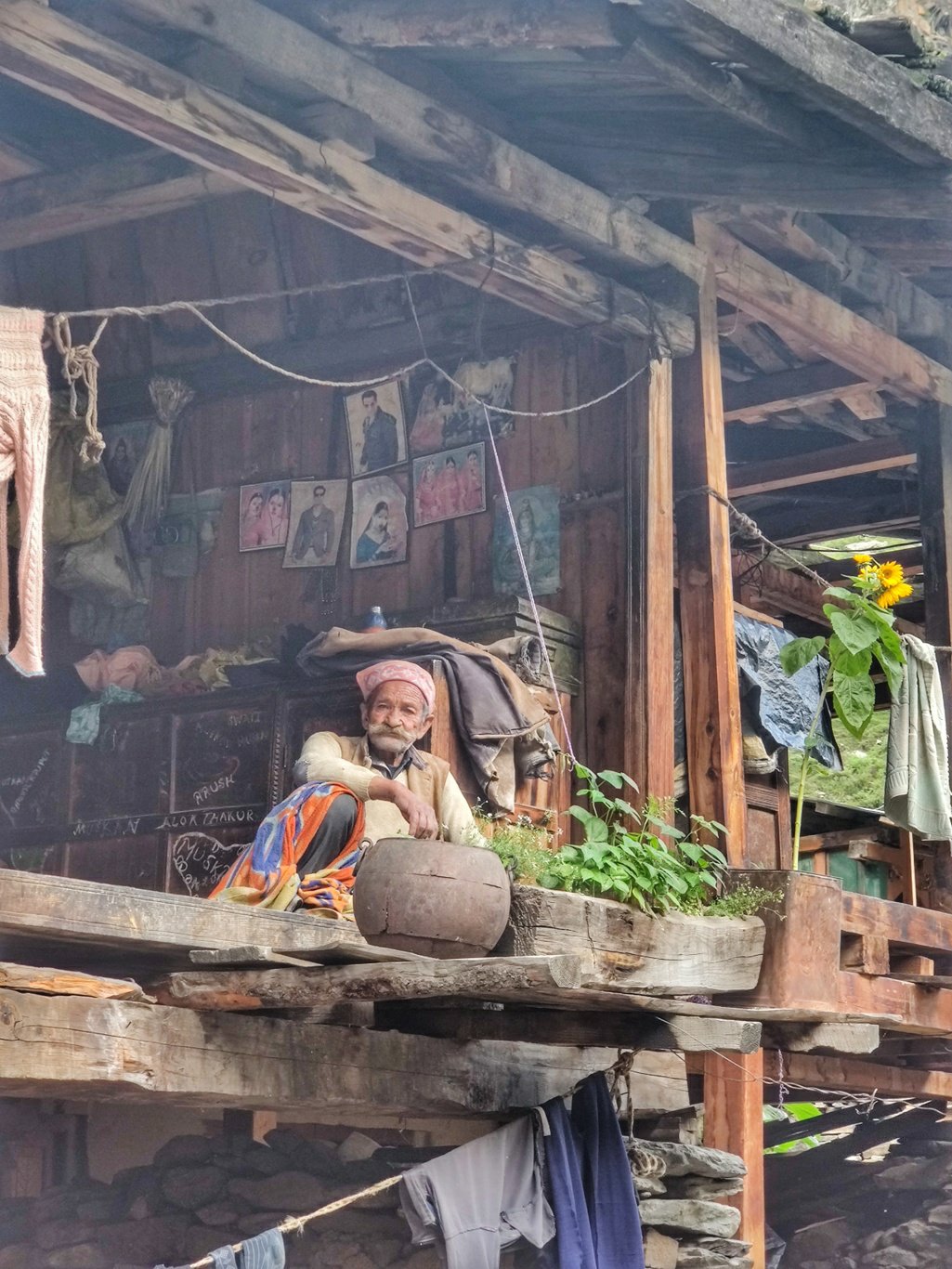
The settlement had a primary school and helipad on the opposite side of the river. We crossed the ferocious Ravi River using a small bridge to reach the main settlement. The houses were lined up in rows stacked on the valley slope each facing the river with large portico’s of flat rock tiles in front where people could work or gather. Every home has an open wooden balcony on the first floor and a small garden with colorful flowers. Each home was looking out on the beautiful lush green forested valley.
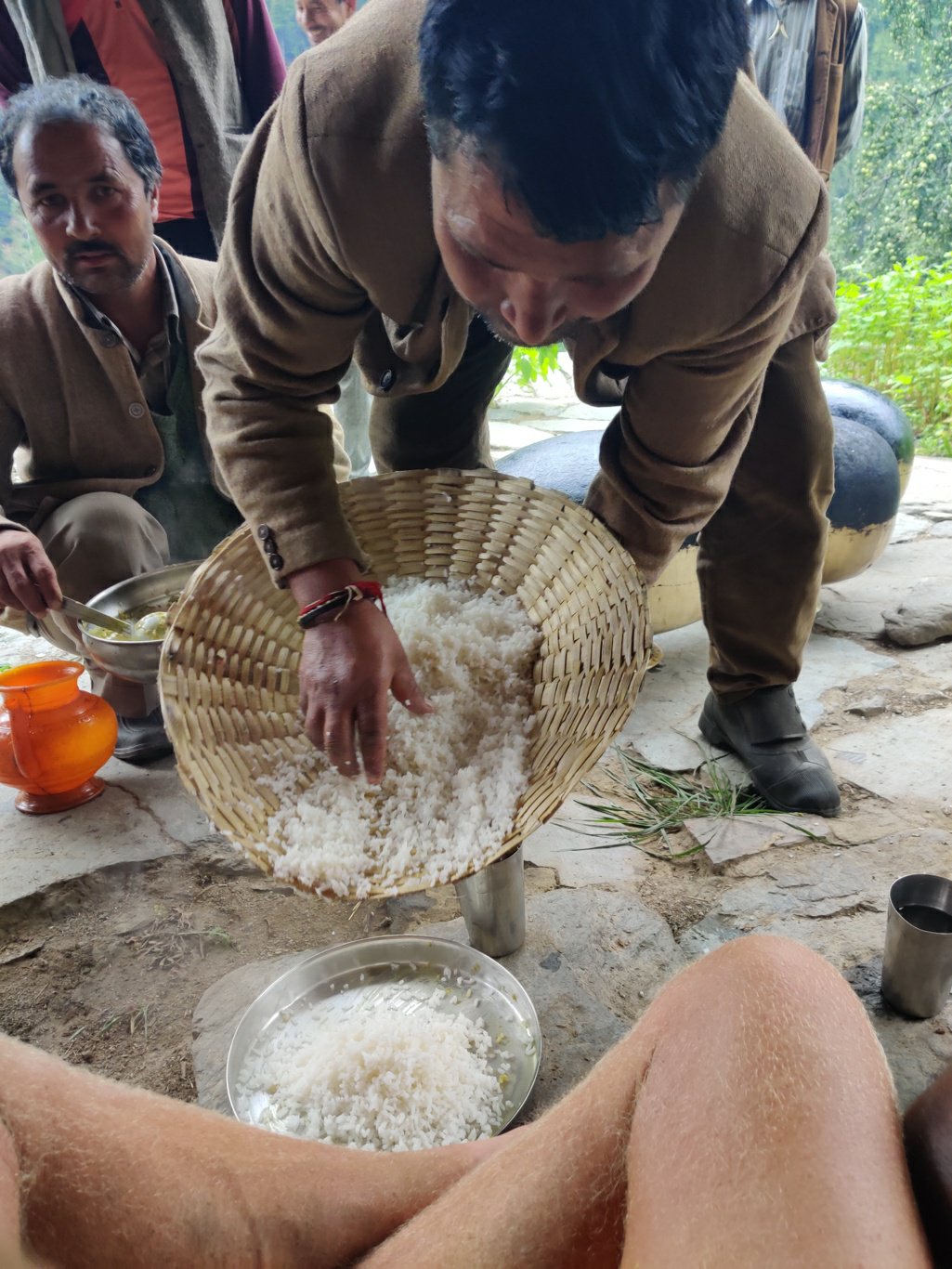
The rooftops were covered by large wooden planks and no fences or walls separating the homes, people here were living as one community. There’s a small dhaba near the school which unfortunately was closed. Soon however we were offered food in one of the homes where people treated us with warm hospitality and unseen respect. As we strolled through the picturesque village we saw beautiful apple orchards and plucked a few for our journey ahead.
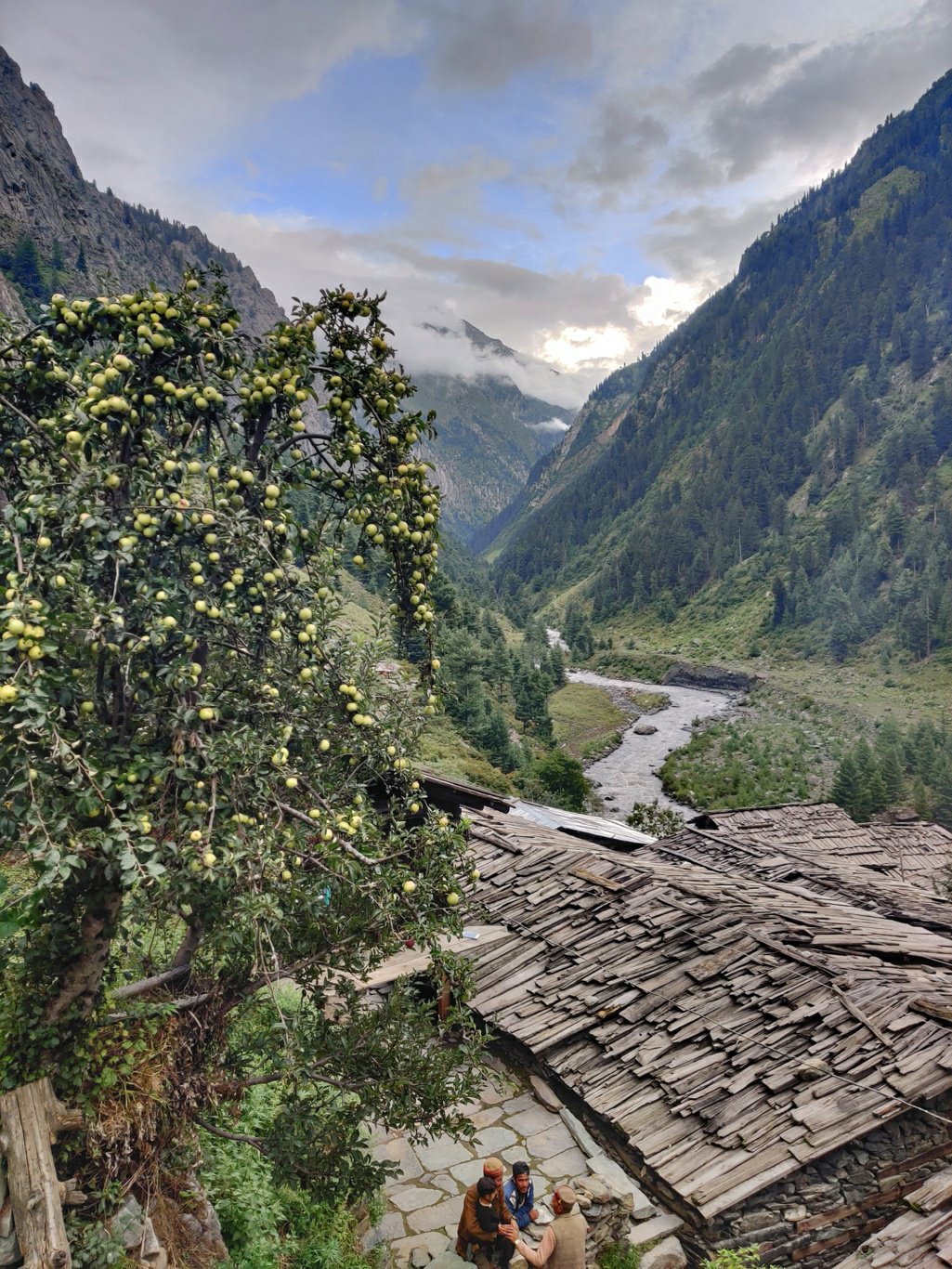
The view of the neighbors gathering on the stone platforms, picturesque wooden homes, and trees loaded with apples with the Ravi river valley in the background made a picture perfect setting. As we were walking home to home clicking pictures of this beautiful setting people gathered in another home invited us over for coffee. We sat down on the wooden wall taking in the overwhelming sight of sereneness and beauty around us.
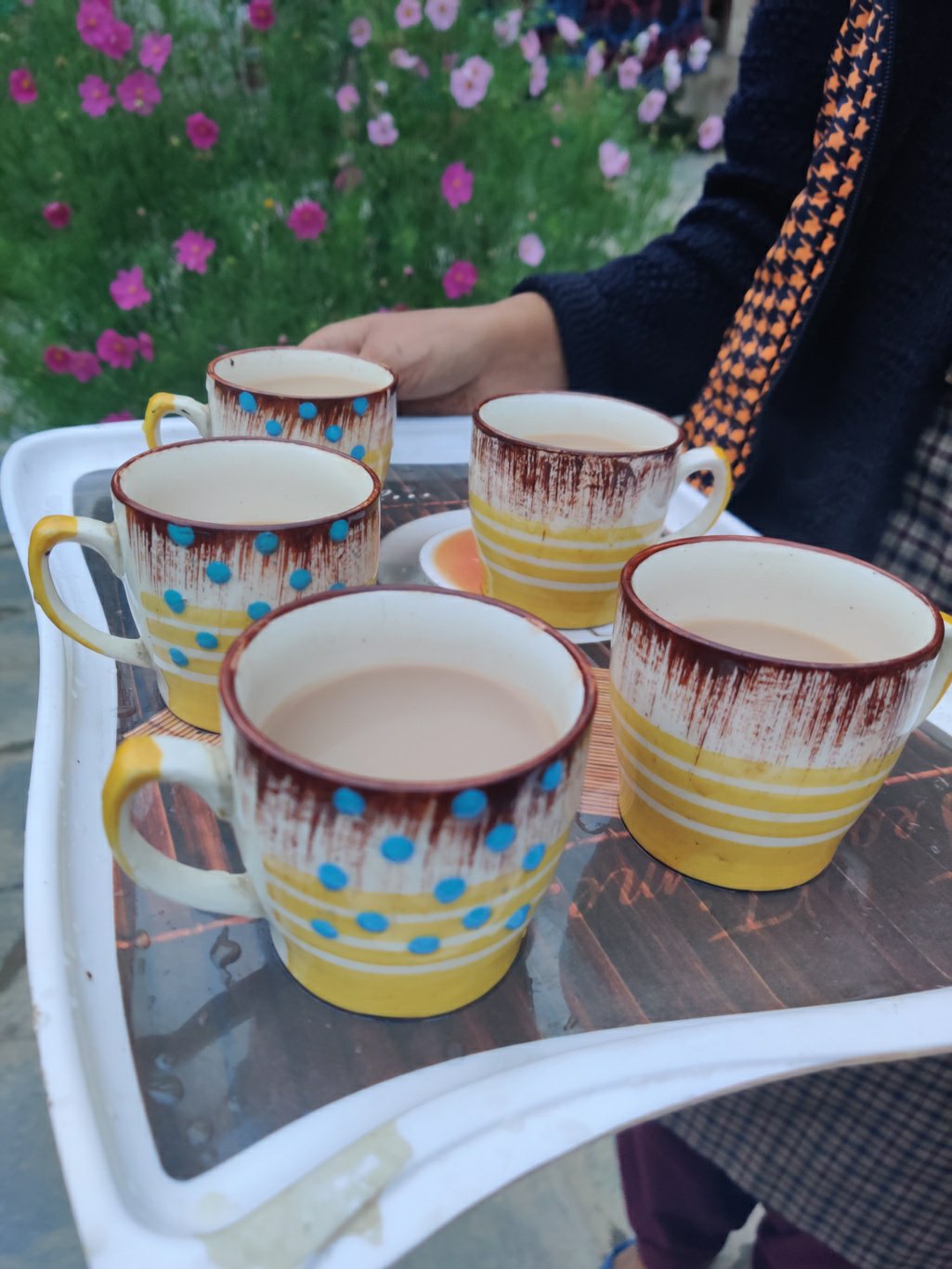
Finally the skies were turning orange while the sun was setting in the West above the Ravi river downstream. We returned to the school where the teachers kindly offered us to stay with them in the primary school building. 4 teachers and 13 kids were manning the school. Teaching was done outside on the portico’s and mid day meals were delivered from the small dhaba. I spread out my mat and lay down on one of the portico’s dreaming off to the gentle buzzing of the Ravi river nearby which would we exploring upstream the next day.
